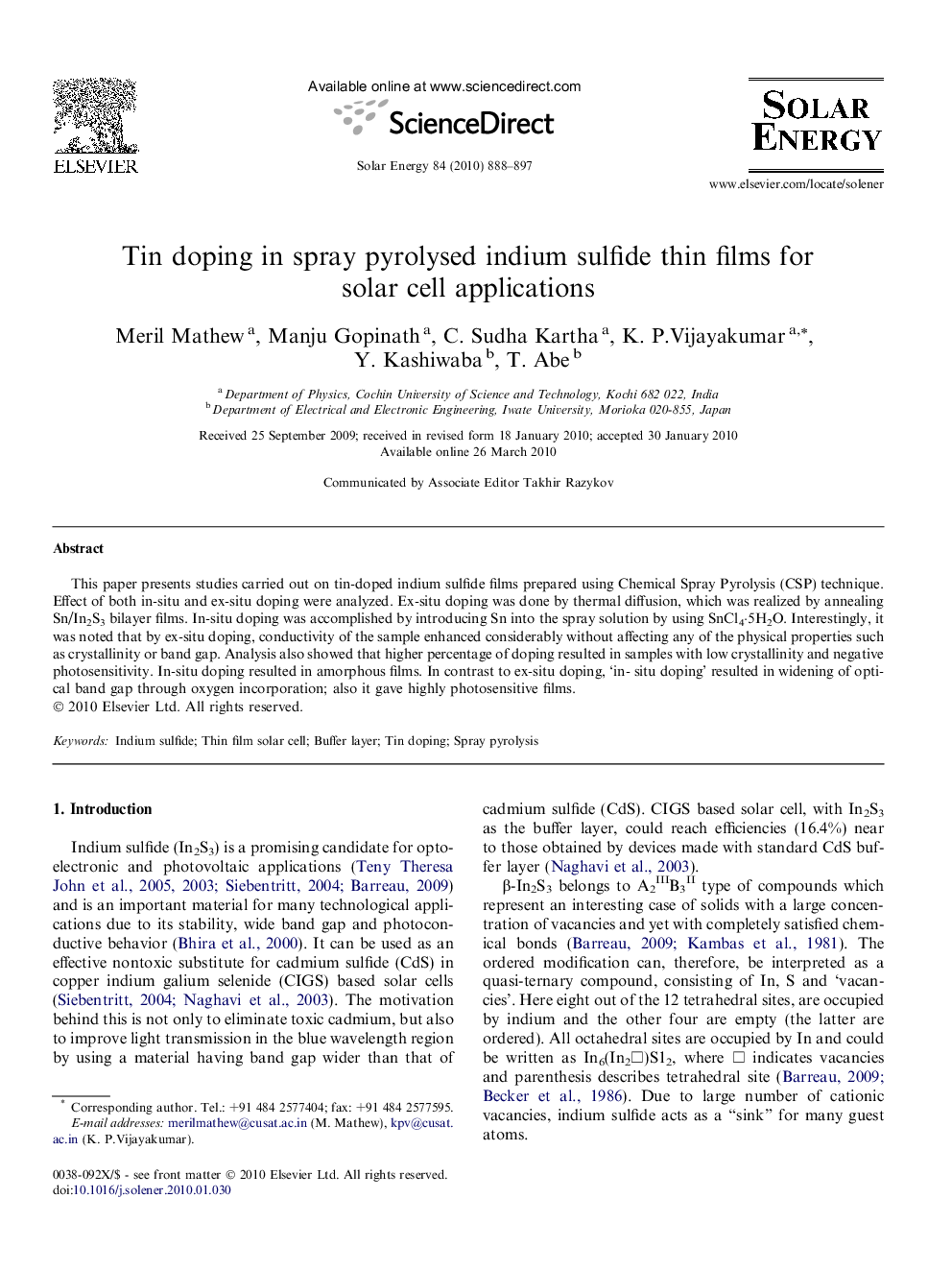| Article ID | Journal | Published Year | Pages | File Type |
|---|---|---|---|---|
| 1551652 | Solar Energy | 2010 | 10 Pages |
This paper presents studies carried out on tin-doped indium sulfide films prepared using Chemical Spray Pyrolysis (CSP) technique. Effect of both in-situ and ex-situ doping were analyzed. Ex-situ doping was done by thermal diffusion, which was realized by annealing Sn/In2S3 bilayer films. In-situ doping was accomplished by introducing Sn into the spray solution by using SnCl4·5H2O. Interestingly, it was noted that by ex-situ doping, conductivity of the sample enhanced considerably without affecting any of the physical properties such as crystallinity or band gap. Analysis also showed that higher percentage of doping resulted in samples with low crystallinity and negative photosensitivity. In-situ doping resulted in amorphous films. In contrast to ex-situ doping, ‘in- situ doping’ resulted in widening of optical band gap through oxygen incorporation; also it gave highly photosensitive films.
